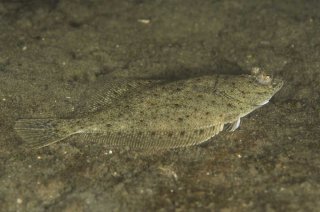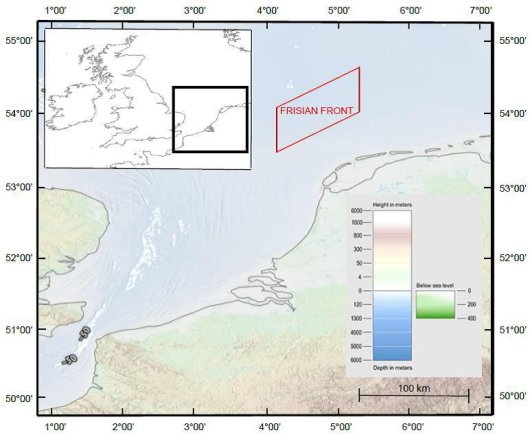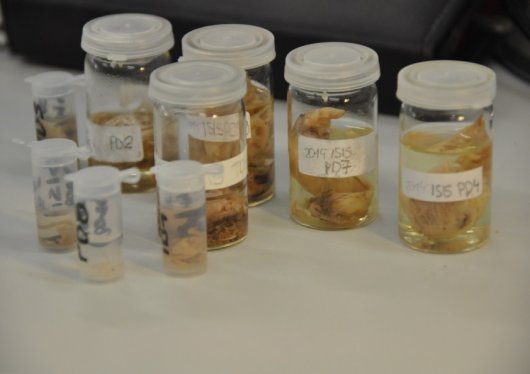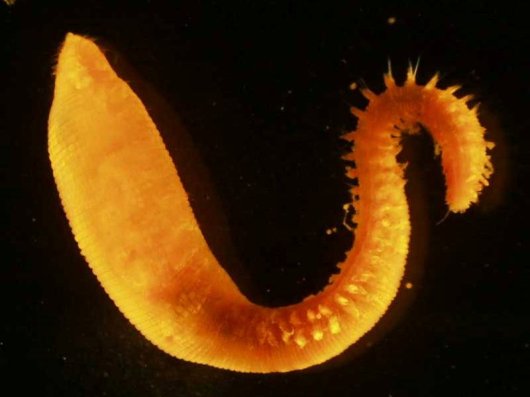
News
Fishing for food and food for fish!
‘Bottom trawling enhances fish production’. That’s what fishermen have long claimed, because trawling would increases food availability for the target fish species. Theoretical studies illustrate that this may or may not be the case, depending on the fishes’ diet, the sediments that their prey species inhabit and the characteristics of the prey species. But can this be measured in practice, and how does pulse trawling, with less physical impact, compare to traditional trawling?
A team of BENTHIS researchers tried to assess the mortality of organisms living in or on the seafloor caused by beam versus pulse trawling in two experiments. These BACI (Before After Control Impact) experiments were carried out in 2013 and 2014 in the North Sea at contrasting sites. One site was near the Belgian coast (coarse sand), the other in the Frisian Front (fine sand/muddy).

The results were a bit disappointing at first sight. Project leader Hans Polet: “It was difficult to detect and quantify mortality rates, because of the high variability of the numbers of animals within the samples.” A closer look at the species caught revealed that the majority of these species could be classified as resistant to trawling impacts. Polet: “We think that due to the history of trawling in these areas, vulnerable species are already difficult to find and that mortality rates of resistant species are too low to detect, given the number of samples taken.”
Although little could be concluded on the effect on mortality of benthic species, the seabed habitat itself was clearly more altered following beam trawling then following pulse trawling. Such a disturbance may alter the availability of food for scavenging flatfish. During the 2014 trials in the Frisian Front in the North Sea, stomachs of plaice (Pleuronectes platessa) were collected for diet studies. The diet consisted of large numbers of the polychaete worm Scalibregma inflatum, but was dominated in terms of weight by sea urchins (Echinocardium sp.), bivalves (Nucula nitidosa) and the masked crab.

Interestingly, plaice increased their feeding activity after trawling, as was shown by significantly higher stomach fullness. Beam trawling resulted in more plaice feeding around than pulse trawling. Moreover, the plaice’s diet after tickler chain beam trawling was dominated by the polychaete worms Scalibregma inflatum, indicating that these worms were indeed made available to the plaice by the deeper trawling. So what does this mean? Hans Polet: “We now have proof that the tickler chains of the traditional beam trawl have a more profound effect on the diet of plaice than pulse trawling has. We also have evidence that the benthic impact of trawling goes beyond the physical changes, and indeed directly affects the biological component of the habitat. ”

References
- Bolam, S.G., Coggan, R.C., Eggleton, J., Diesing, M., Stephens, D., 2014. Sensitivity of macrobenthic secondary production to trawling in the English sector of the Greater North Sea: A biological trait approach. J. Sea Res. 85, 162-177.
- Depestele, J., Ivanovic, A., Degrendele, K., Esmaeili, M., Polet, H., Roche, M., Summerbell, K., Teal, L.R., Vanelslander, B., O'Neill, F.G., 2015. Measuring and assessing the physical impact of beam trawling. ICES Journal of Marine Science: Journal du Conseil.
- van Denderen, P.D., van Kooten, T., Rijnsdorp, A.D., 2013. When does fishing lead to more fish? Community consequences of bottom trawl fisheries in demersal food webs. Proceedings of the Royal Society B: Biological Sciences 280.
